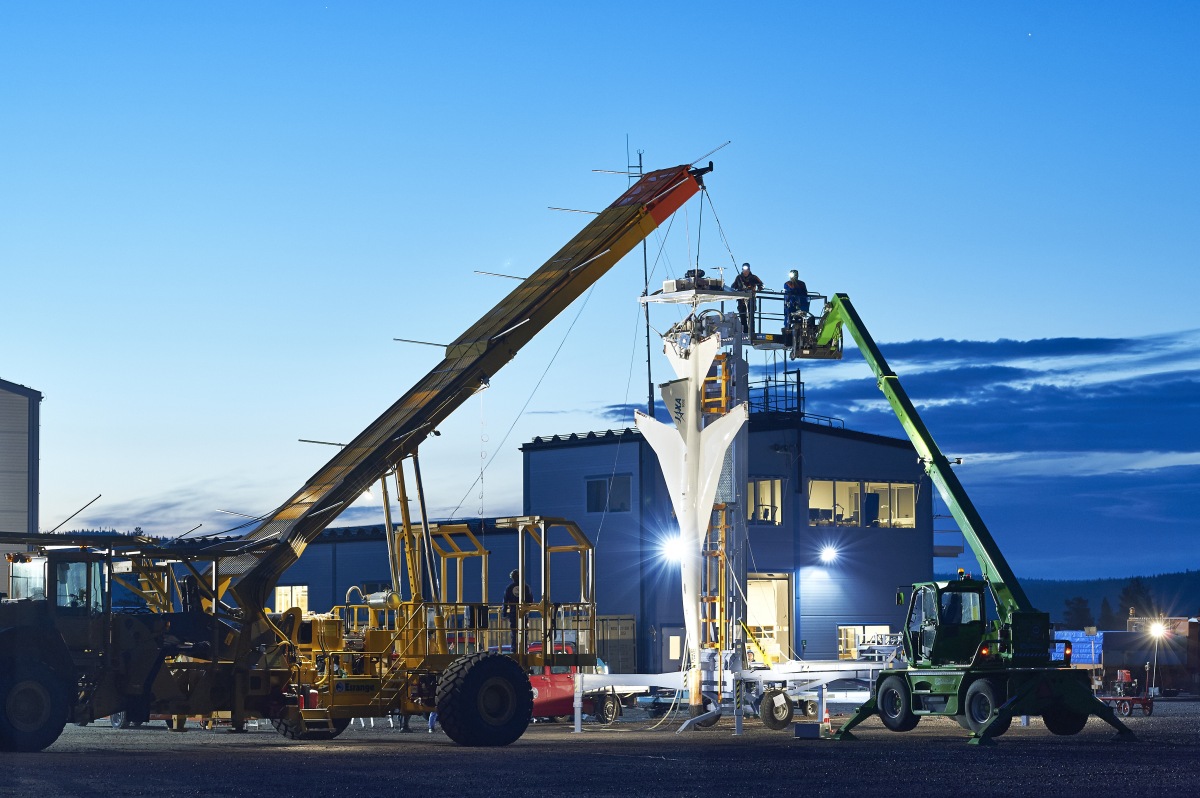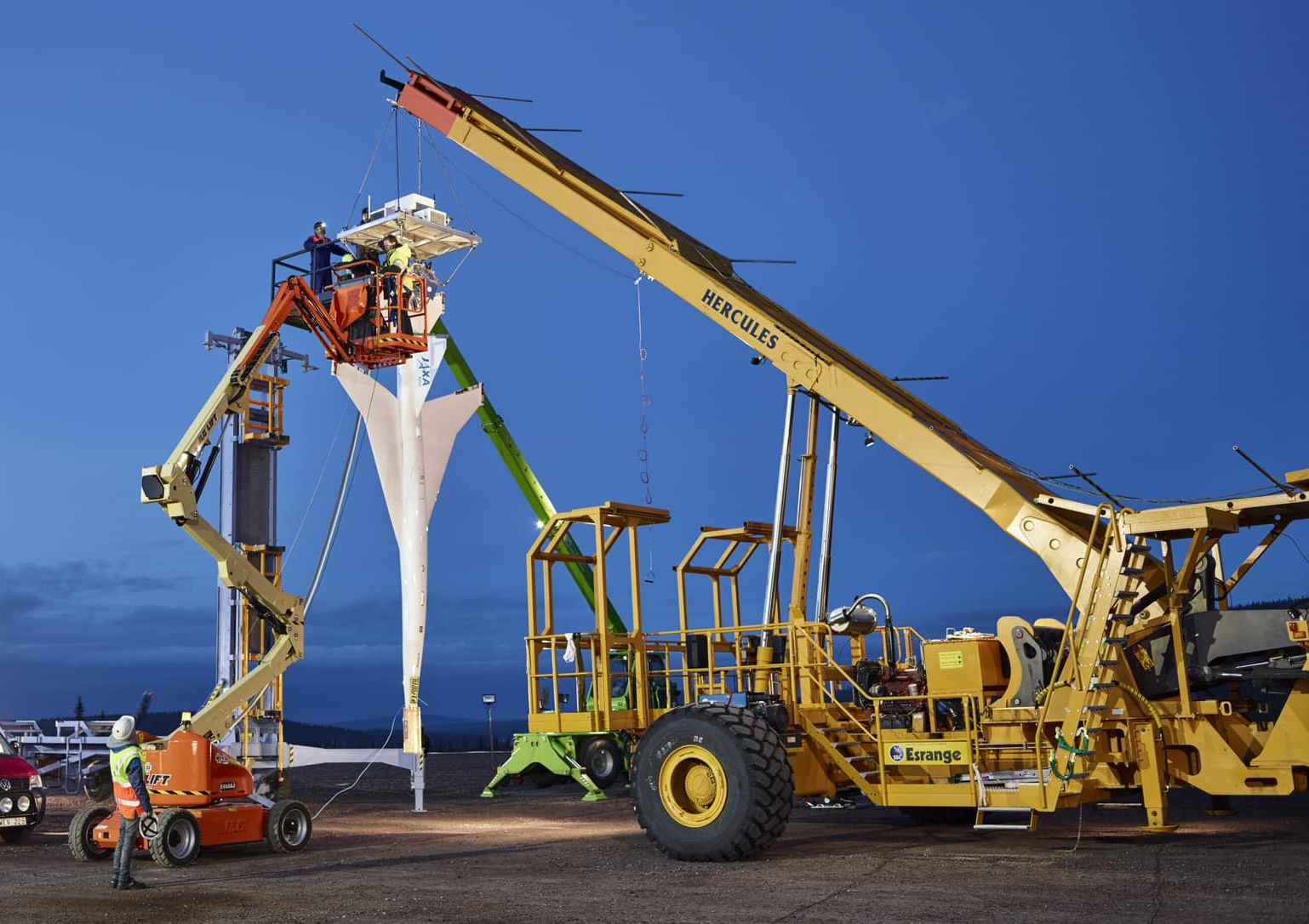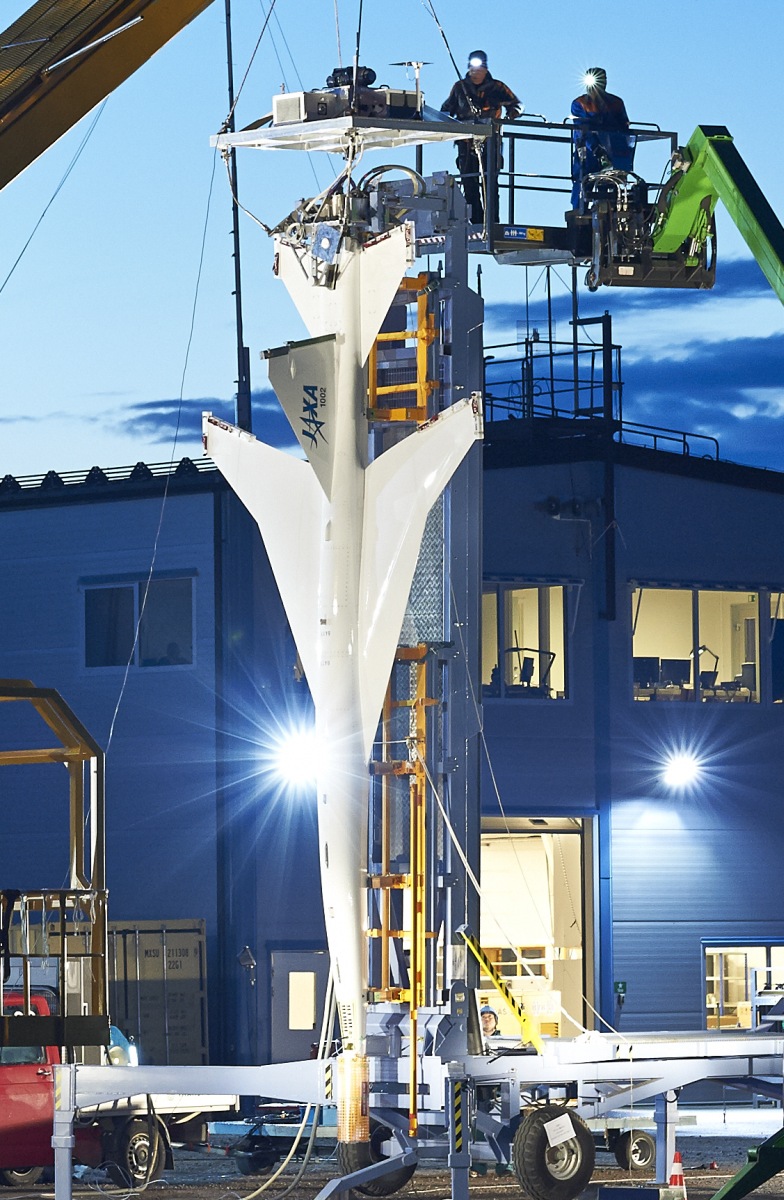Purpose of the flight and payload description
D-SEND stands for Drop test for Simplified Evaluation of Non-symmetrically Distributed sonic boom and was a project carried out by the Aviation Program Group of the Japanese Space Agency JAXA between 2011 and 2015. It comprised a set of flight demonstrations of low sonic boom design technology which, as a key component of environmental compatibility, was considered as a high priority issue in the research and development of silent supersonic technology.
The D-SEND project was composed of two series of drop tests from a stratospheric balloon denominated D-SEND#1 and D-SEND#2. In the D-SEND#1 series, two different axisymmetric bodies were dropped and the sonic booms were measured and compared with each other. In the D-SEND#2 series, an experimental supersonic airplane model (unmanned aircraft with no engine and capable of autonomous flight) based on JAXA's low sonic boom design technology was dropped and the sonic boom was measured. In both series the sonic booms were measured and recorded by a microphone system that was tied to a line between the ground and a blimp floating at an altitude of 1 kilometer. These drop tests were carried out at the Esrange Test Site near Kiruna in Sweden.
Details of the balloon flight
Balloon launched on: 8/16/2013
Launch site: European Space Range, Kiruna, Sweden
Balloon launched by: Columbia Scientific Balloon Facility (CSBF)
Balloon manufacturer/size/composition: Zero Pressure Balloon
End of flight (L for landing time, W for last contact, otherwise termination time): 8/16/2013
The second series of drop tests od the D-SEND project involved an experimental supersonic airplane (unmanned aircraft with no engine and capable of autonomous flight) designed utilizing JAXA's proprietary low sonic boom design technology. It was meant to be dropped from a balloon at an altitude of 30 km. The unmanned aircraft would glide over the boom measurement systems at Mach 1.3 and a flight-path angle of 50 degrees, where the generated boom signature goes down vertically toward the systems. The sonic boom would be measured by a series of boom measurement systems held at an altitude of 1 km by tethered balloons.
This was the first drop test for the project. From a launch and trajectory point of view it was a success, but the airplane did not behave as expected. After the separation from the balloon, the supersonic airplane model deviated from the expected flight path and mission was aborted about 12 kilometers from the targeted boom measurement area. Although JAXA's sonic boom measurement system worked properly and captured the sonic boom, it was confirmed that the pressure waveform measured was not from the expected nominal flight. The test would be repeated in 2015.
External references
- Advanced drop tests from stratospheric balloons SpaceOps 2012 Conference Stockholm, Sweden
- D-SEND project website Japan Aerospace Exploration Agency
- List of balloons launched from ESRANGE SSC Space website (via Archive.Org)
12229If you consider this website interesting or useful, you can help me to keep it up and running with a small donation to cover the operational costs. Just the equivalent of the price of a cup of coffee helps a lot.




